The Hubert de Givenchy Collectionneur sale held by Christie’s in Paris—one of their biggest there with 1,229 lots raising €114,992,000, more than double the €50,000,000 estimate—was epoch-defining. It was the end of an era of grand couturiers and their possessions as one does not come across people like Monsieur Hubert Taffin de Givenchy or art, furniture and objects that he surrounded himself with every day.
De Givenchy was the ultimate collector with an eagle eye, a telescopic lens with which he viewed artwork, furniture, sculptures and objets d’art by European master artisans, and instinctively knew where to place them in his houses. The two exquisite residences from where the lots originate are Hotel d’Orrouer in Paris and Manoir du Jonchet (which was actually a chateau in Touraine, in Loire Valley). The 17th to 20th century lots give an idea about the intensely refined mind and elegant taste of one of the world’s most famous couturiers—the founder of the House of Givenchy.
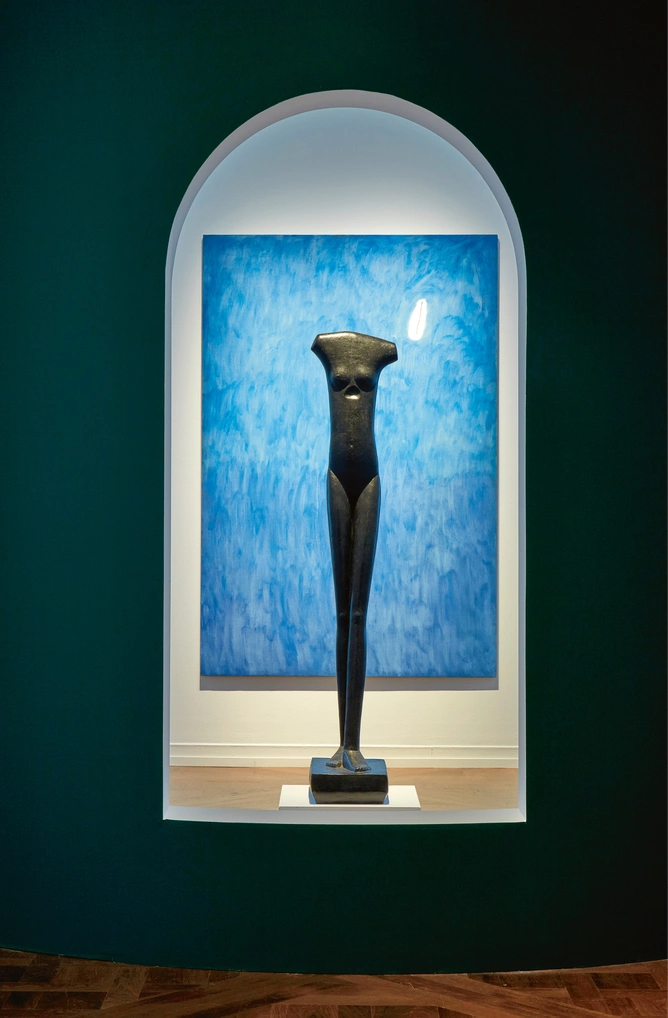
Born in 1927 in Beauvais, an aristocrat with Venetian roots, the tall (he was 6’5”) Monsieur de Givenchy took in a taste for materials and décor early in life, influenced by a great-grandfather who did sets for Paris Opera and a grandfather who worked in a tapestry factory. He went to Paris at age 17 to study at Beaux-Arts, opened his couture house in 1952 and went on to dress the likes of Audrey Hepburn (a lifelong friend), Jackie Kennedy Onassis and Duchess of Windsor. His mentor and friend was the great Cristobal Balenciaga from whom he learnt to approach fashion and aesthetics with an architectural eye. This informed his choice of interiors as well.
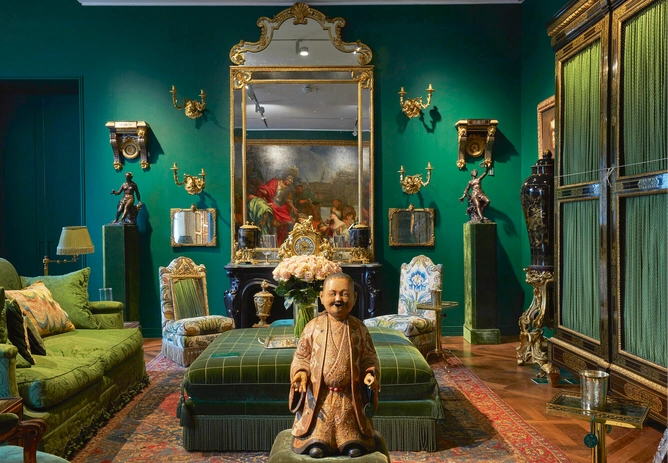
Hubert de Givenchy, who passed away in 2018, had previously held two sales with Christie’s, in 1993 and 2017. This latest was by the Givenchy family. In this sale, 76% of lots sold above estimates, with bidding from 18 countries. Buying by lot came 57% from Europe and West Asia, 12% from Asia-Pacific and 30% from the Americas. The top piece was The Walking Woman, a 163 cm high sculpture of an Egyptian-inspired elongated female form, almost suspended mid-walk, by sculptor and de Givenchy’s close friend Alberto Giacometti, which fetched €27,2 million, and a 1968 painting by Joan Miro, Le Passage de L’Oiseau Migrateur, which got €6,845,750.
It’s great to see how his tastes changed with time, how his homes, which he lovingly kept with his partner Philippe Venet, reflected his love for both the modern and the classic, and how his friendships with American clients like Bunny Mellon influenced his collections. “From his very first apartment, decorated by Charles Sévigny, you can see Kurt Schwitters’ Für Tilly (made in the summer of 1923) next to his bed,” says Tancredi Massimo di Roccasecca, deputy director, Valuations Department at Christie’s, on a zoom call from Paris. “And Miro’s Passage de l’Oiseau Migrateur from 1968 never left his collection, unlike the Rothko and an armoire by Andre-Charles Boulle that he got from artist Jose Maria Cert (sold in 1993).”
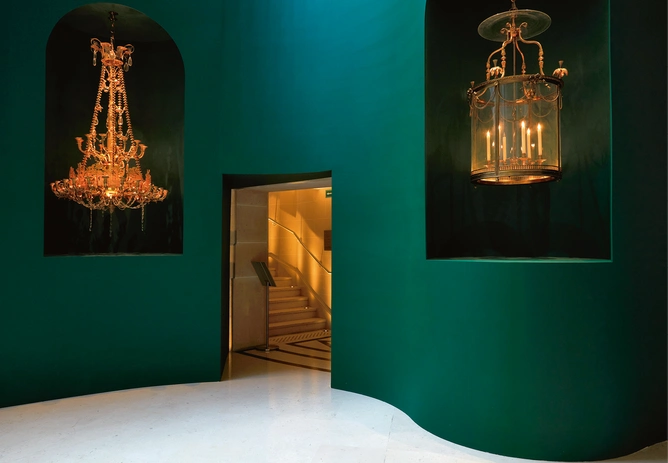
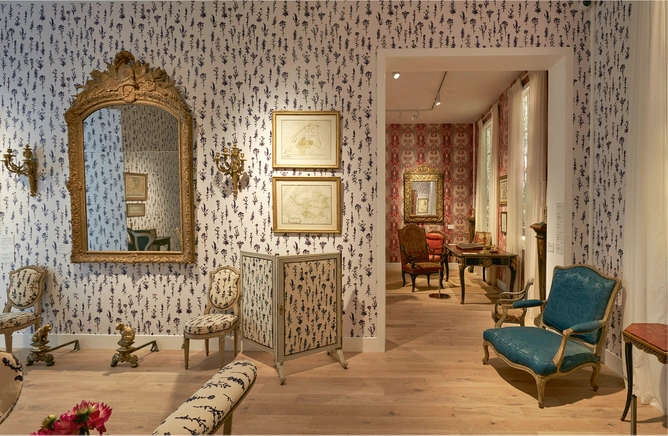
The commode (a Pierre Garnier Louis XVI ormulu-mounted mahogany commode from the late 18th century) and the Pierre Gouthière Louis XV ormulu candlesticks from 1770, from those early days, are very much in the sale. “Most people would start with traditional and go towards the modern,” says Massimo. “But de Givenchy was so talented, he knew what each house wanted.”
De Givenchy saw the genius of cabinet-makers of the 18th century and honed in on this period. Even when he shifted to his next residence, a hotel particulier in Paris (basically a mansion house, like what’s found in Piccadilly), he kept these majestic wooden armoires from the Regency period (c. 1720) with ebony detailing and marquetry. “The 18th century was his link with everything,” says Massimo. “You have this wonderful bureau by David Roentgen, a famous cabinet-maker, and François Remond, a French master metalworker and bronze gilder, in Louis XVI style (c. 1780; it sold for €2,142,000). There are lots of little mechanical elements to it—secret compartments that pop open with the turn of a key.” Some of these cabinets can also be found in Buckingham Palace and Versailles.

One of De Givenchy’s earlier homes, an airy villa in Cap Ferrat, South of France, has wonderful bergeres (a type of chair) by Maison Decour from the 20th century. “Hubert de Givenchy was a great defender of furniture makers and upholstery makers of the 20th century,” says Massimo. “So, here you have reading lamps and side tables by David Hicks and chauffeuses (a kind of chair) by Maison Decour. The home had a lot of rattan and wicker work furniture.” And we see a Diego Giacometti coupe in resin, the first of many that were to occupy centre stage in his homes. He liked to decorate in a lavish, opulent style, what is also the period style, and you can see this at Hotel d’Orrouer. “I like to use the term Chiaroscuro, from those 16th century painters like Caravaggio who liked to play with light and dark,” says Massimo. De Givenchy also had a thing for ornate candlesticks, and his curtains came from the Rothschild family—he used the same fabric to upholster his chairs. He had a fondness for deer—his name comes from St Hubert, who is represented by a deer’s head—and one of the standout pieces is a bronze of a deer lying down made by Janine Janet in 1964 and gifted to him by Cristobal Balenciaga (sold for €252,000).
“In Manoir du Jonchet, the first thing we see is a bronze bird by François-Xavier Lallane,” says Massimo. “Here you have white textiles and mirrored walls, and we see Diego Giacometti furniture for the first time. He had a close relationship with the artist, who made a lot of furniture for his property.” One would expect the Manoir of Chateau du Jonchet to be opulent and heavy and the Paris apartment to be modern and light, but de Givenchy did the reverse. “It’s not what the houses wanted,” says Massimo. “If you start putting modern furniture in a home that doesn’t have natural light, it doesn’t fit. And conversely, light destroys the patina of classic furniture.” So, there is a pair of white surrealist albatross by Alberto Giacometti (made in 1937 by Diego’s brother which sold for €4,242,000) and a low brass table by Diego Giacometti (c. 1970-80) which can’t be damaged by light. Diego Giacometti is omnipresent in the chateau—even the front door knocker in bronze (c.1975) is by the artist and wonderfully links the artist, patron and the house. “De Givenchy used this term noble simplicité—he was always about the understatement,” says Massimo. “He even called his chateau or castle a manoir instead of a castle. Nothing shouts, everything is in its place.”
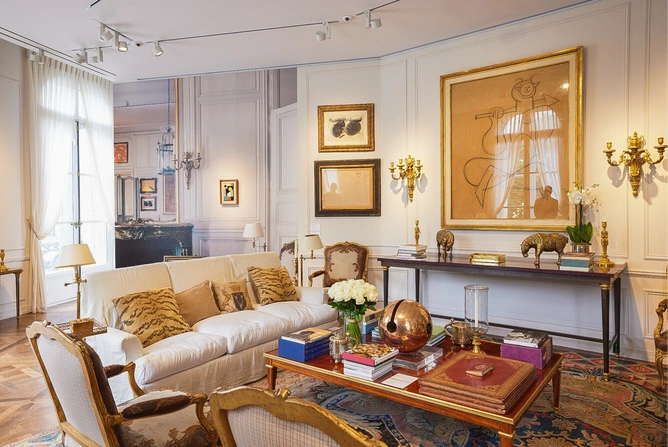

Among the top-selling lots are a painting by Hubert Robert that depicts Roman ruins painted using the art of capriccio (€302,400). Then is a pair of marble busts of Alexander The Great and Emperor Claudius from the 18th or 19th century that are still made in Rome (€630,000). There’s also a Picasso that fetched €4,242,000. The flat bureau by Joseph Baumhauer, made in c. 1770, is in the Louis XV style. “He was all about Greek taste, as you can see in the Doric-column feet,” says Massimo about the piece that fetched €2,322,000. And there’s a painting of an Indian nobleman, painted in the European way, by the entourage of Tilly Kettle (1734-86; it fetched €239,400). “Once he bought a piece of furniture, he just looked at it, and knew where it would fit—that was the perfectionism. Once he saw a piece from the 18th century, he didn’t want to go for anything else, because it was perfect.”
Much like the legend himself.







Leave a Comment
Your email address will not be published. Required field are marked*